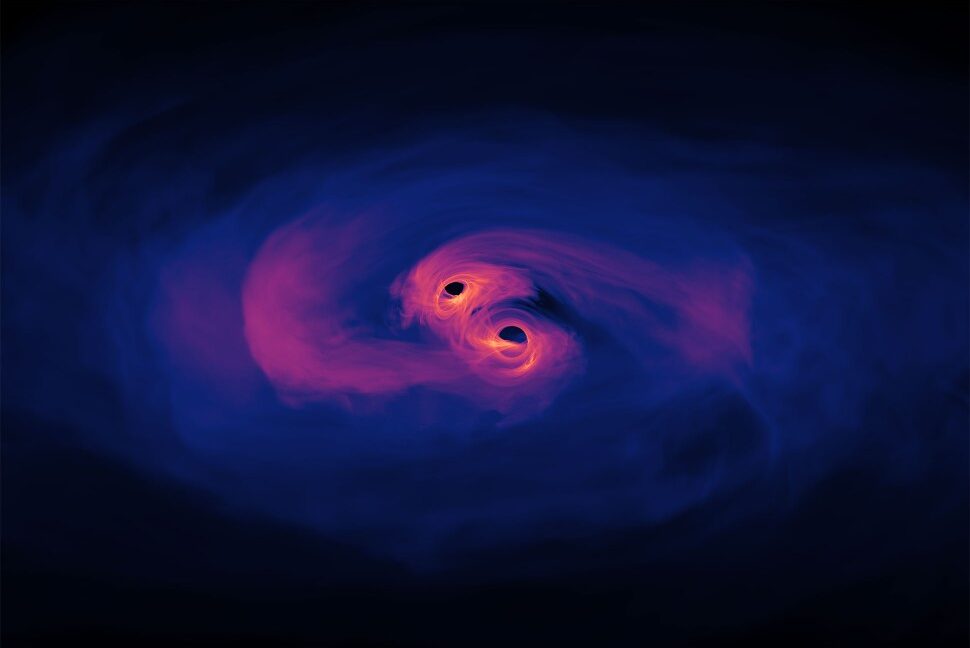Supermassive black hole binary emits unexpected flares
“In addition to stars, gas clouds can also be disrupted by SMBHs and their binaries,” they said in the same study. “The key difference is that the clouds can be comparable to or even larger than the binary separation, unlike stars, which are always much smaller. “
Looking at the results of a previous study that numerically modeled this type of situation also suggested a gas cloud. Just like the hypothetical supermassive black hole binary in the model, AT 2021hdr would accrete large amounts of material every time the black holes were halfway through orbiting each other and had to cross the cloud to complete the orbit—their gravity tears away some of the cloud, which ends up in their accretion disks, every time they cross it. They are now thought to take in anywhere between three and 30 percent of the cloud every few cycles. From a cloud so huge, that’s a lot of gas.
The supermassive black holes in AT 2021hdr are predicted to crash into each other and merge in another 70,000 years. They are also part of another merger, in which their host galaxy is gradually merging with a nearby galaxy, which was first discovered by the same team (this has no effect on the BSMBH tidal disruption of the gas cloud).
How the behavior of AT 2021hdr develops could tell us more about its nature and uphold or disprove the idea that it is eating away at a gaseous cloud instead of a star or something else. For now, it seems these black holes don’t just get gas from what they eat—they eat the gas itself.
Astronomy & Astrophysics, 2024. DOI: 10.1051/0004-6361/202451305
Supermassive black hole binary emits unexpected flares Read More »
